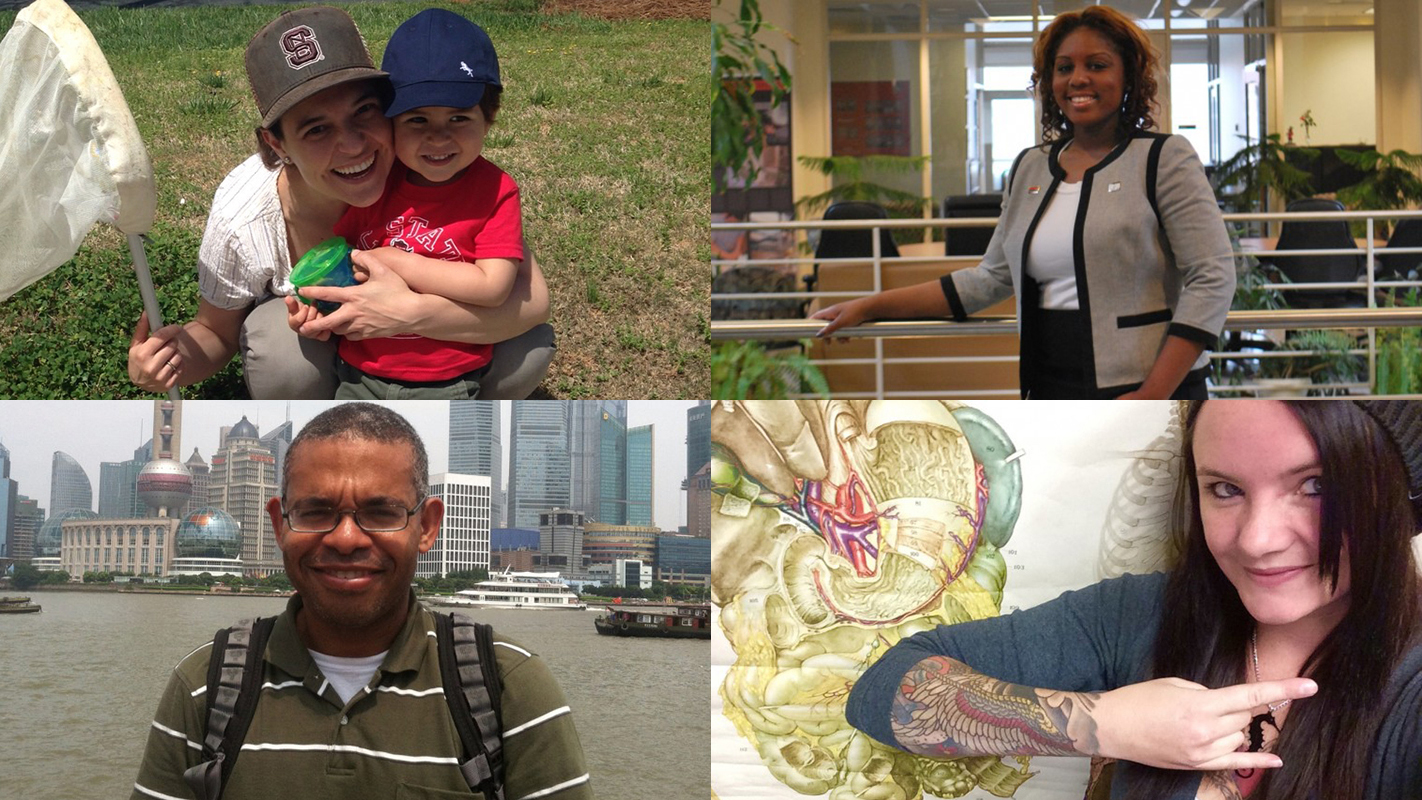Highlighting STEM and Diversity at NC State

The fields of science, technology, engineering and mathematics (known collectively as STEM) have a diversity problem.
In 2013, the U.S. Census Bureau reported that women, African Americans and Hispanics are significantly under-represented in STEM fields. For example, in 2011, 11 percent of the U.S. workforce was African American, while 6 percent of STEM workers were African American. And while Hispanics made up 15 percent of the workforce, they made up only 7 percent of STEM workers. Women made up 48 percent of the 2011 workforce, but only 26 percent of the STEM workforce.
Part of the problem is that women and people of color don’t see themselves in many STEM fields. More specifically, they don’t see people that look like them in those fields.
One step forward in addressing this imbalance is to highlight diverse role models in STEM.
Inspired by the This Is What A Scientist Looks Like website, which offers short profiles of scientists outside the lab, we decided to launch a series called “This Is What Science Looks Like at NC State.”
We used the word “science” because it is more accessible than “STEM” – which is an unfamiliar acronym to many people. The series focuses on researchers from under-represented groups in STEM fields, and also includes researchers who have physical disabilities.
Since launching the series in April 2014, we’ve posted more than 40 profiles of STEM researchers at NC State. There are professors, postdocs, grad students and undergrads, representing fields from toxicology and electrical engineering to computer science and plant biology. These are men and women from diverse racial and cultural backgrounds, at various stages of their careers.
These aren’t glossy profiles by a public relations team. The researchers write about themselves. Some of the posts are a lot longer than others, depending on what the researchers want to say. The photos are, for the most part, photos that researchers send us – we’ve used just a handful of photos from university sources. They’re vacation photos, or photos of time spent with family and friends. We’re not trying to make everyone look like Buckaroo Banzai (the fictional physicist/rock-guitarist). Simply letting people know that researchers have lives outside the laboratory (and that they’re not always white guys) is a step in the right direction.
“This Is What Science Looks Like at NC State” has made the transition from “new feature” to “ongoing series,” and we plan to continue adding posts for as long as we can find researchers who want to participate. But there’s something else we can do.
Launching this series did not take a significant amount of time or money. All it took was a little initiative and a willingness to make the effort. Yes, we do spend some time talking to researchers, formatting their photos and proofreading their written submissions for typos, but we think it’s a good investment. We also think it would be great if other institutions followed suit.
There are a lot of universities out there with excellent research programs, to say nothing of state, federal, and nonprofit research institutions. It would be great to see them develop their own efforts to highlight diverse role models in STEM fields. They don’t have to copy what we’ve done, of course – they can come up with their own approaches.
If you work for a research institution and have questions about the series, please let me know: matt_shipman@ncsu.edu. And if you’re a researcher at NC State who wants to be involved in the series, definitely let me know.
- Categories:


